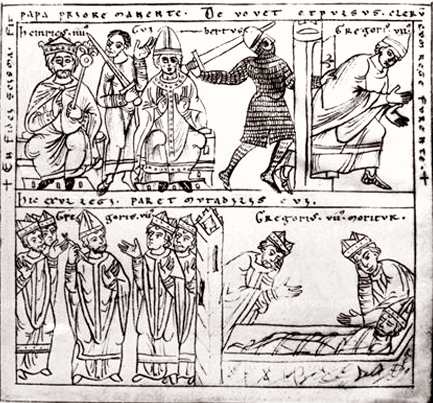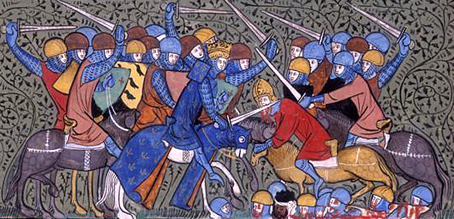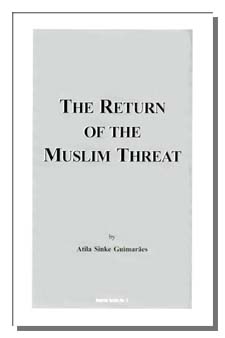The Miracle of Christendom:
A Reason for Hope
Joseph B. Sheppard
How should a Catholic react to this vale of tears in which we live? We are seemingly handed every excuse to pay as little mind as possible to all that goes on outside our front door; draw the shades and fortify ourselves inside our homes with the consolation of good spiritual reading and holy devotions such as the Rosary. Is this all that Our Lord Jesus Christ intended for His Church and His faithful?
Of course not. Every Catholic knows the indispensable need for the Holy Mass, the Sacraments and the priesthood. Is there still more that Our Lord desires of us? Yes, in addition to His command to the Apostles: “Go ye into the whole world, and preach the gospel to every creature” (Mark 16: 15). We are to defend the fragments of Catholic Civilization we still find in this world and hope, pray and work for the Reign of Jesus Christ on Earth..
The apex of Catholic society existed in the High Middle Ages (roughly 1100 to 1300), as Pope Leo XIII so beautifully described in his Encyclical Immortale Dei:
“There was a time when the philosophy of the Gospel governed the States. In that epoch, the influence of Christian wisdom and its divine virtue penetrated the laws, institutions, and customs of the people, all the categories and all the relations of civil society. Then the Religion instituted by Jesus Christ, solidly established in the degree of dignity due to it, flourished everywhere, thanks to the favor of Princes and the legitimate protection of the Magistrates. Then the Priesthood and the Empire were united by a happy concord and by the friendly interchange of good offices. So organized, civil society gave fruits superior to all expectations, whose memory subsists and will subsist, registered as it is in innumerable documents that no artifice of the adversaries can destroy or obscure.”
 
Gregory VII faced many persecutions for his strong governing of the Church. Above top, driven from Rome by the Antipope Guibert.
Bottom, he issues a ban of excommunication on the clergy and the King, and his death at Salerno in 1085. |
One may object and ask: “But the Middle Ages were long ago. What does that have to do with today?” The High Middle Ages saw a great flowering of Catholic society, born of the seeds sown by the Apostles and germinated by the blood of martyrs living in a decadent Roman Empire. The establishment of such a civilization was miraculous. Who would have believed such a thing possible except those with great faith? Were not the faithful in the catacombs convinced that the end of the world was near? What of those who witnessed the barbarian tribes overrunning the decadent Roman Empire?
Today we may have reason to believe the end of the world is soon – only the good God knows. But when looking at the challenges that have faced the Church, within and without, we have reason to hope for another period of Catholic civilization. In short, if God wills it and we cooperate, what happened before can happen again.
The threats that stand between Catholics today and a return to Christendom are analogous to those that assailed Christendom during the Middle Ages.
The first types of threats are those that can be called internal. We witness weaknesses in pride and sensuality, and at times heresies, that originate from within the Church herself. Dogmas defined by the great councils of the Church, infallible teachings of the Popes, or Our Lord’s own words are openly questioned or dismissed.
What happened when such internal threats plagued the Church in the early Middle Ages? At the period of history that anticipates the High Middle Ages, God gave us Pope St. Gregory VII (1020 - 1085) to purge the Church of scandals and abuses. Those abuses and scandals including seeking clerical office for earthly reasons and sins of impurity, similar to problems we see in the Church today.
Unlike today, however, Pope St. Gregory dealt with the problems decisively and swiftly. He laid siege to the three great evils of clerical life: 1. simony (the sale of ecclesiastical offices); 2. Nicolaitism (clerical marriage and incontinence), and 3. general worldliness.
At the Lenten Synod of 1074 St. Gregory confirmed the reforming decrees of previous Pontiffs and added others of a drastic and uncompromising thoroughness. He stipulated that : 1. Clergy who had gained their offices by simony were declared deposed; 2. Clergy leading immoral lives were forbidden to exercise their sacred ministry; 3. The laity were forbidden to receive the ministrations of the clergy who refused to submit “so that those who cannot be corrected by the love of God or the dignity of their functions, may be humbled by human respect and the odium of the people.”
At a time when the Catholic world seemed to be crumbling and falling to pieces, Pope Gregory VII took the whole situation in hand and, guided by the Holy Ghost, piloted the Barque of Peter to safety. Is God not capable of providing us with another St. Gregory VII today, if we ask Him and truly desire it? Would God prefer us to presume that the situation is hopeless and not even to ask for such a holy Pope?
The second threat seeking to destroy or prevent the existence of Christendom comes from those who desire the Church’s destruction from without. The chief threat of this kind in the Middle Ages was that of the Mohammedans. In only one hundred years - in the 7th-8th centuries - this new religion’s followers had conquered Syria, Palestine, Egypt, North Africa and Spain. The Christian world was assailed on two fronts, the Iberian Peninsula in the West and Constantinople in the East. The Byzantium Empire checked the Mohammedans at Constantinople while Charles Martel finally stopped the Mohammedan advance in the West at the Battle of Poiters (732).

Charles Martel defeats the Saracens
Chroniques de France, c. 1350 | |
Although Charles Martel was a man of many faults, he rendered crucial assistance to Christian Civilization. It was his descendant, Charlemagne, who became the first Holy Roman Emperor and rendered an even greater service. So it was that God saved Europe for Christendom.
St. Gregory VII, as early as 1073, contemplated the first Crusade to the Holy Lands. He exhorted the faithful to recover the Holy Sepulcher from the hands of the Mohammedans, who had destroyed sanctuaries and harassed pilgrims since the seventh century. St. Gregory did not live to see his dream of a crusade fulfilled; the first crusade was called by Pope Urban II some quarter of a century later in 1095.
Today we are still threatened by Mohammedanism. By this I mean those who believe it is the will of their god to subject the entire world to Islamic law by violence. It is just as important today to keep such beliefs in check as it was in the Middle Ages. Also, God may use men who are far from perfect as tools to preserve the vestiges of Christian Civilization today, as He did to save a budding Christendom in the past.
In summary, in studying the glorious History of the Church, one has much reason to hope for a true Christian Civilization on this earth. It will be a civilization not only like that of the High Middle Ages, but one that reaches a new apex.

Posted on January 26, 2006

Related Topics of Interest
 Understanding the Crusades Understanding the Crusades
 Debunking Myths about Life in the 1500s Debunking Myths about Life in the 1500s
 The Immaculate Character of the Church The Immaculate Character of the Church
 The Swan's Song of Galileo's Myth The Swan's Song of Galileo's Myth
 How a Catholic Should Act in Face of Bad Popes How a Catholic Should Act in Face of Bad Popes


|